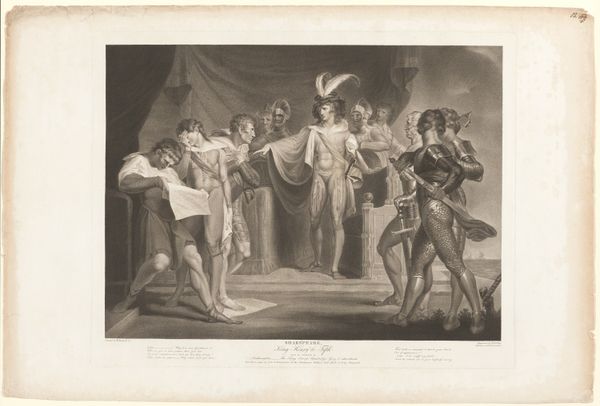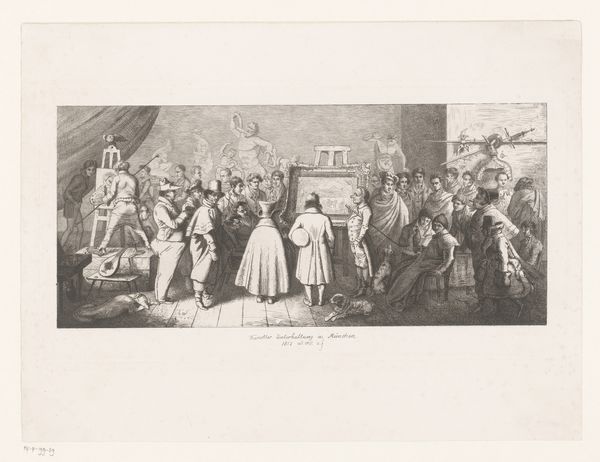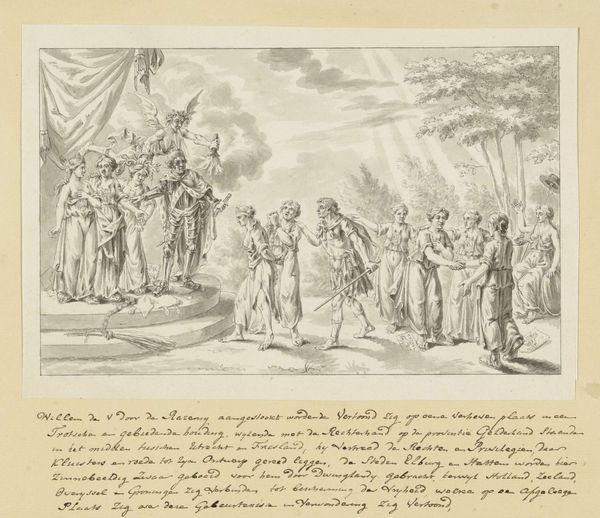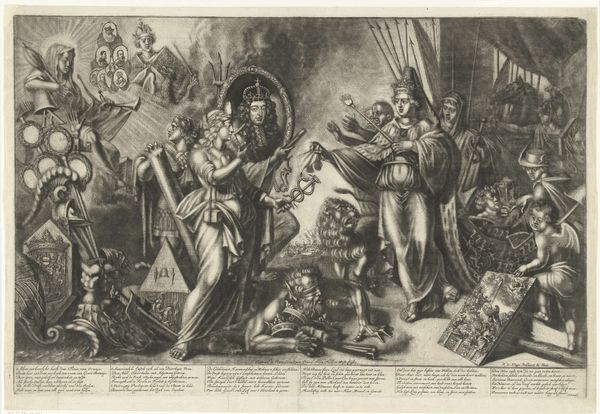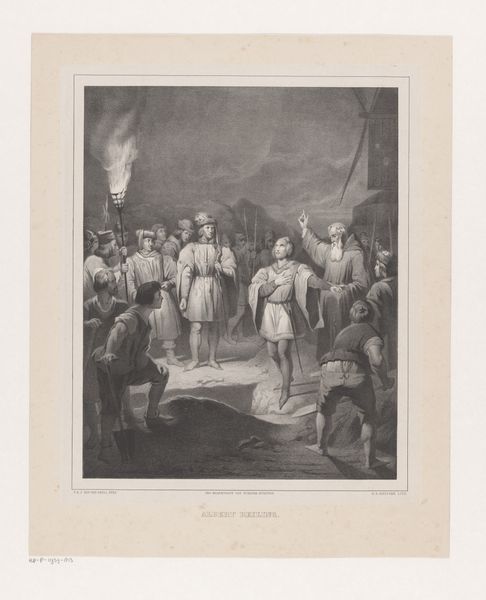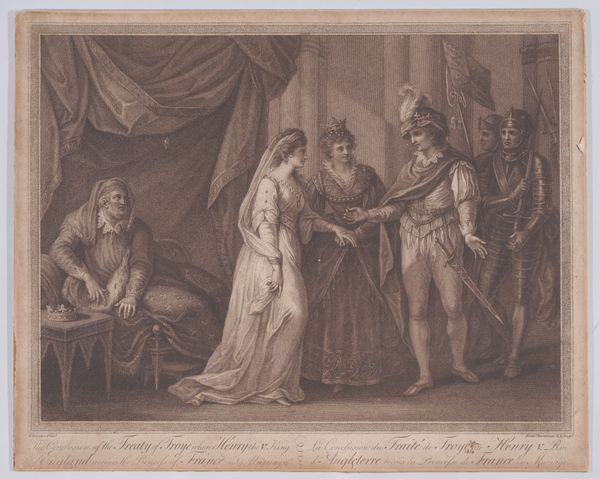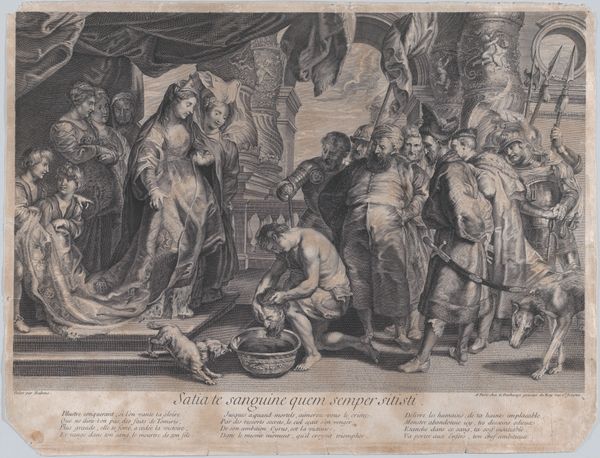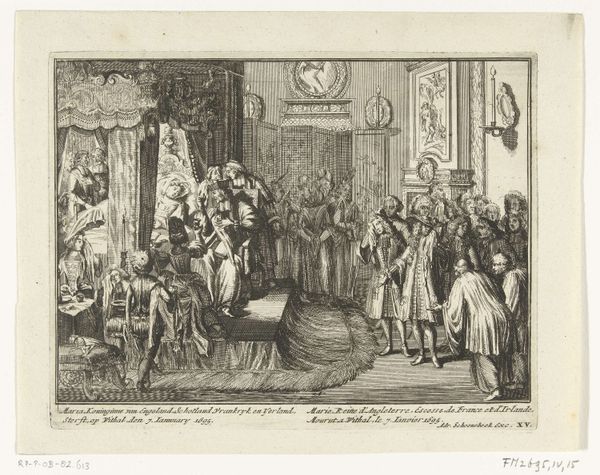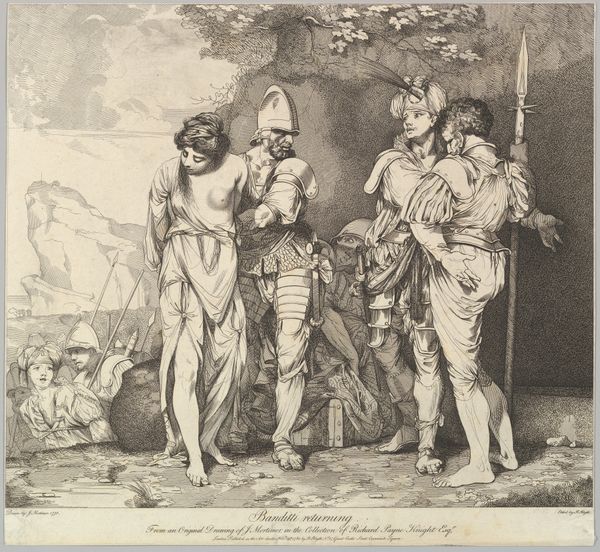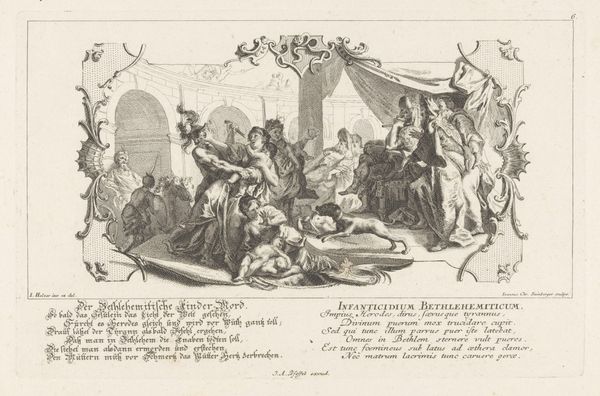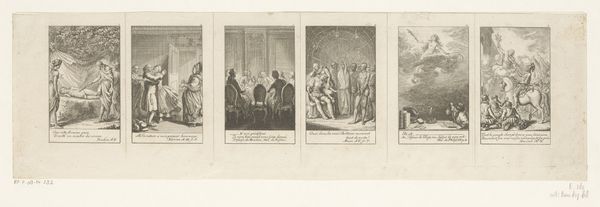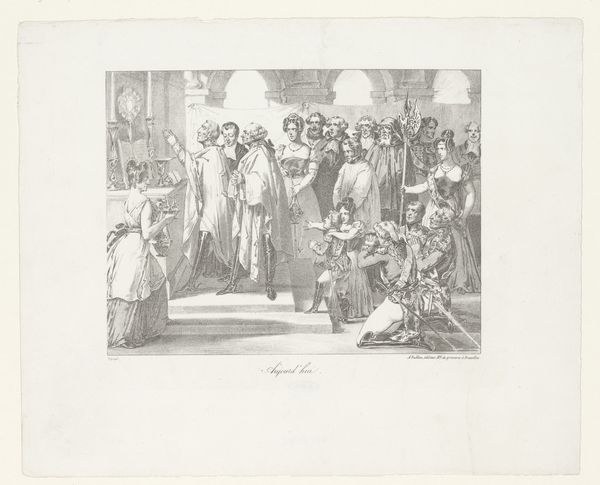
Napoleon in de onderwereld voor Rhadamathe, Minos en Aeacus c. 1821
etching, engraving
portrait
neoclacissism
etching
old engraving style
history-painting
engraving
Dimensions: height 414 mm, width 604 mm
Copyright: Rijks Museum: Open Domain
Editor: This is "Napoleon in de onderwereld voor Rhadamathe, Minos en Aeacus," or Napoleon in the Underworld before Rhadamanthus, Minos, and Aeacus, an etching by Jacob Joseph Eeckhout, around 1821. It's a fascinating historical piece; quite detailed and the composition feels a bit…staged? What’s your interpretation of it? Curator: This work presents Napoleon entering the underworld. Consider the political context: the etching dates to around 1821, not long after Napoleon’s final defeat and exile. How do you think Eeckhout positions Napoleon in relation to the classical figures of judgment? Editor: Well, he's certainly being judged, which is a pretty direct political statement considering the events. But placing him within this classical, almost allegorical setting... what purpose does that serve? Curator: It elevates the political commentary to the level of grand historical narrative. The reference to the classical underworld and its judges casts Napoleon's downfall as an event of lasting historical and moral significance. Are these the victors writing the epitaph? And what does the idealogical movement to neoclassicism infer here, to elevate him? Editor: So, the artist isn't just depicting a historical moment, but also making a statement about Napoleon's place in history, turning political events into moral tales. Also that neoclassism reinforces authority, but to have him placed there with him falling would send a much harsher burn than if he were using something contemporary.. I guess the message about power and justice still resonates today. I learned it wasn't just political, but speaks to power through timeless allegories. Curator: Exactly, by using Neoclassicism, it invites viewers to contemplate the eternal questions of power, justice, and the consequences of one's actions. This reminds us about the function and accessibility of art.
Comments
No comments
Be the first to comment and join the conversation on the ultimate creative platform.
